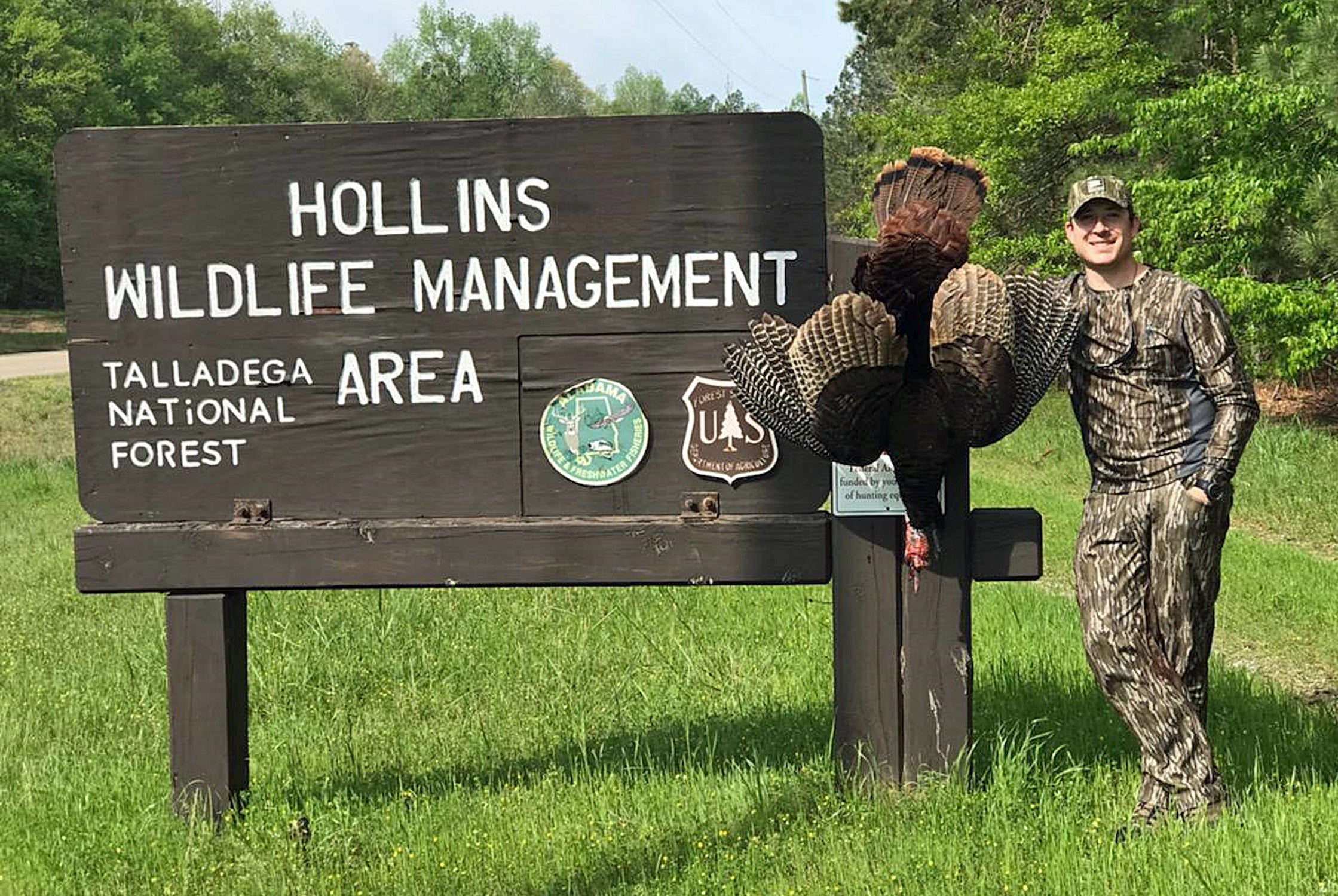By DAVID RAINER, Alabama Department of Conservation and Natural Resources
The Alabama wild turkey season, which ended on May 3, will likely have to include an asterisk in the record books for a variety of reasons.
Obviously, the COVID-19 restrictions played a role as did a renewed push for successful hunters to report their turkey harvests.
Alabama Wildlife and Freshwater Fisheries (WFF) Director Chuck Sykes made a significant point at the Alabama Conservation Advisory Board meeting earlier this year that if compliance with Game Check’s requirement to report all turkey harvests didn’t increase, the 2021 season might be in jeopardy. Apparently, the message was delivered.
“I think it was a double factor,” Sykes said. “I think more people did report taking birds this year because of what happened at the Advisory Board. However, I am 100-percent confident more birds were killed this year. I can use myself as a prime example. I am extremely fortunate to be able to hunt in some really good places year after year, and I keep a very detailed record of each turkey season. This was a banner year. The travel restrictions associated with the coronavirus was a contributor.
“I had way more turkeys killed with me in Alabama than in years past just simply because I had more days afield in Alabama,” he said. “It wasn’t that I did better this year. I still had roughly the same daily average. I just got more days in so there was more hunter effort in Alabama because I couldn’t go out of town. All of my meetings out of Alabama were canceled, so I was in Alabama longer. I wasn’t just a weekend warrior like I’ve been for the past few years. This year, the weather was bad on several weekends, so I got to hunt more good days during the week. Therefore, more turkeys were harvested for me personally.”
With current regulations that state the season will start on the third Saturday in March, the opening day of the 2020 turkey season happened on March 21, the latest date possible. Add in relatively good weather, except for a couple of weekends, and Sykes said conditions certainly favored the turkey hunters.
“I think starting the season later put the turkeys farther into their breeding activity and made them easier to call,” he said. “And people had way more time on their hands. I know a boatload of people who hunted public land this year for the first time because they had time to do it, and they killed turkeys.”
That increase in hunting on public lands was affirmed by WFF Upland Game Bird Coordinator Steven Mitchell, who said Alabama’s WMAs (wildlife management areas) had more hunter activity than he’s ever seen.
“I think a lot more hunters were in the woods this year,” Mitchell said. “The WMAs were getting used a lot more than in previous years. We don’t know exactly how much more use right now. As a safety precaution associated with social distancing, we pulled the requirements for daily permits for the spring. But we’re still working the WMAs. By observation, there were trucks at every place to park.”
Mitchell said one lucky hunter was able to bag a trophy turkey on the Hollins WMA. The bird had 1¾-inch spurs.
“We’ve had a lot of use and a lot of harvest,” he said. “With more than week to go in the season, we had 4,000 more birds reported through Game Check than all of last season.”
Director Sykes said he normally hunts with one of his friends in Choctaw County about three days a year. This year, the hunting buddies spent 10 days in the woods.
“I was teleworking from the hunting camp,” he said. “We could go hunting for a couple of hours before he had to go to work and I got on the computer.
“I got quite a few emails and texts, that people were seeing (the increased harvest) too. People who might normally kill one or two birds, they killed their (five-bird) limit. Others who hardly ever killed a bird, they killed two or three.”








